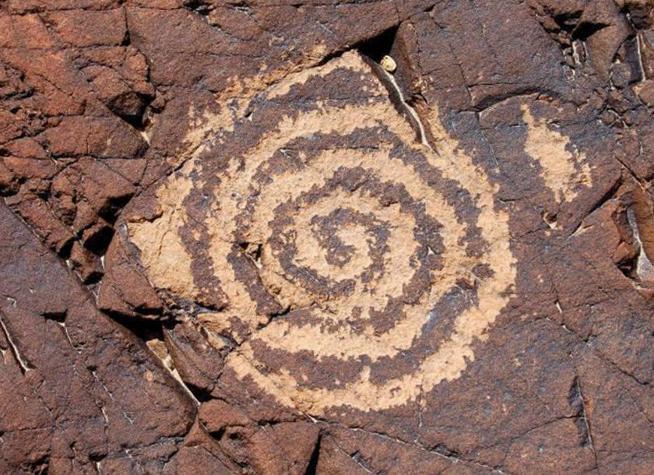
Spiral petroglyphs are universal on nearly every continent of the world.
GRAVITY WAVES
A set of bubble/film experiments (2023) utilized new light apparatus that produced a shadowgraph effect from the oscillating bubble nucleus onto a sheet of paper.
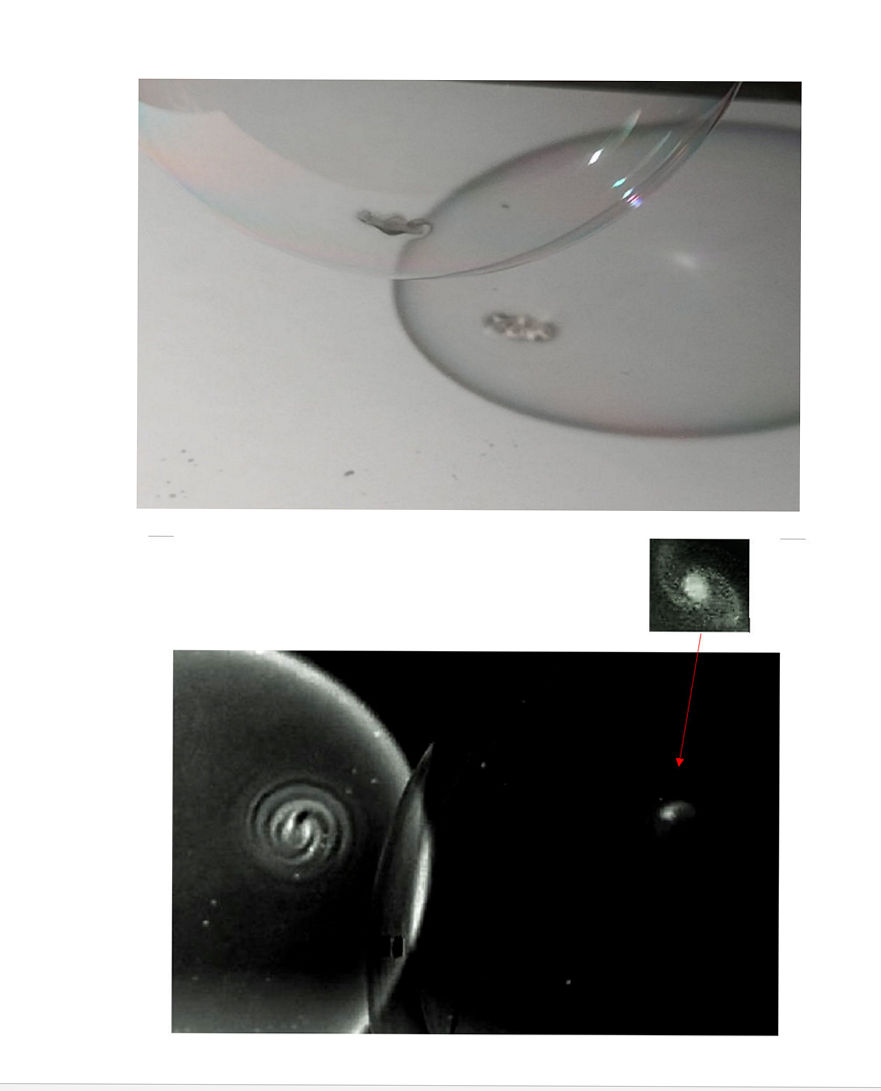
Gravitational waves (left) from the oscillating tad-pole nucleus (right), originally as a rotating barred spiral.
In this context, galaxies, blackholes, large-scale astrophysical structure and densities in oscillating gravitational fields radiate waves at varied frequencies and amplitude. Converting information to gravitational wave maps requires utilization of computational fluid dynamic algorithms, which express object size/mass and wave geometry. Colliding fields at stages of evolution emit active and complex non-uniform gravitational waves.
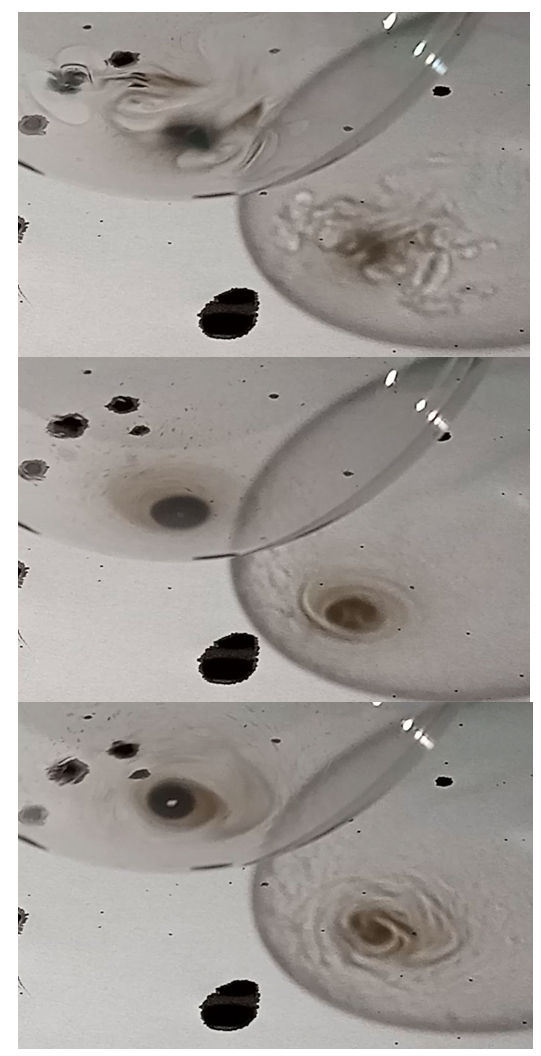
Experiments with one bubble collapsing into another expanding bubble/film created gravitational effects on a reversed time scale. The donor nuclei are contracting in the expanding field.
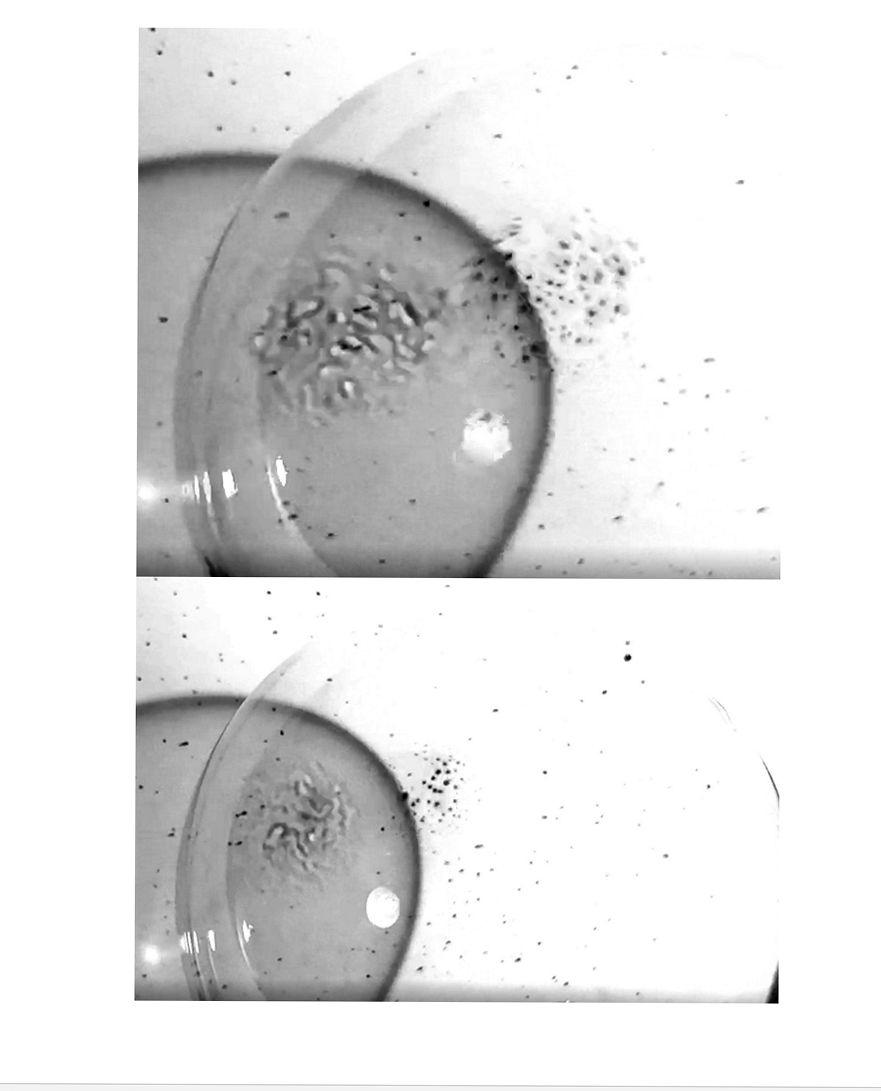
A detail of the shadowgraph has stochastic features like observed CMB polarization.
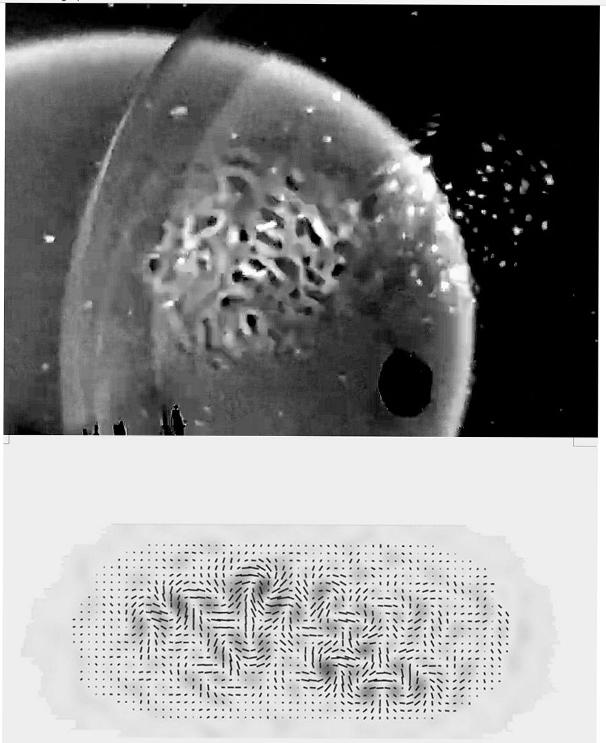
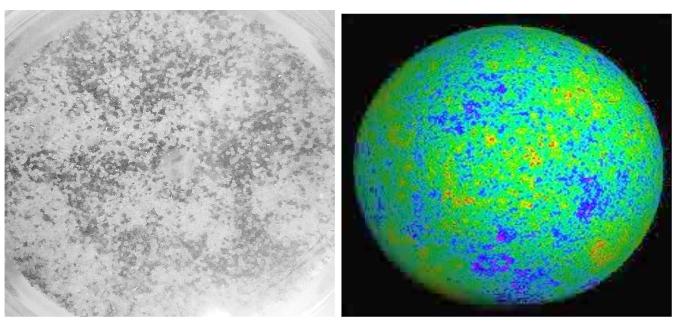
Experiments with sand/particles oscillated at various frequencies (32-50hz) in a glass sphere produced resonant density percolation, which can also be observed in CMBR. The features are absent in a packed sphere without free space.
Particles of sand vibrated in polygonal configurations generate curvilinear or cellular features. As polygonal local field currents affect galaxy evolution, oscillations of very large field currents impact structures of an expanding universe.
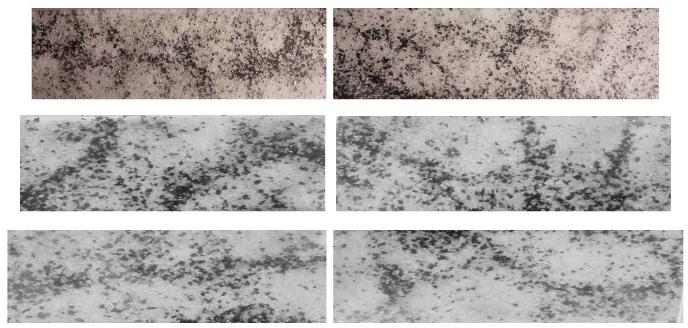
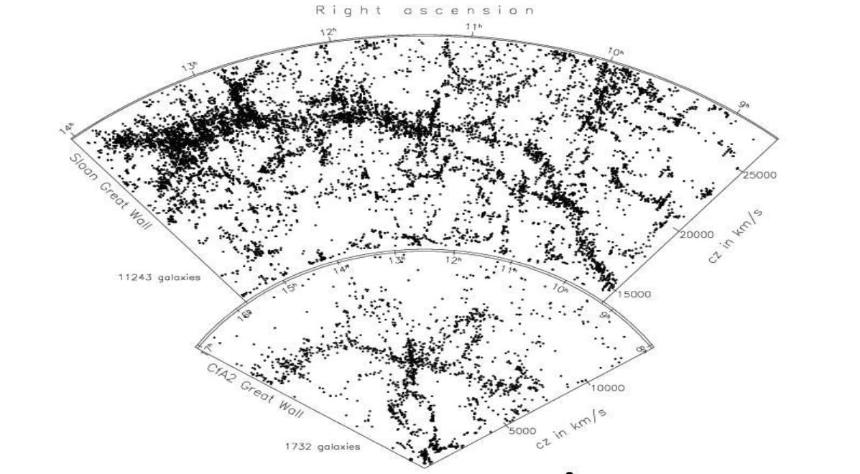
Mass is oscillated in density waves that collide, form walls and other filamentary structures. These features are identified in galactic surveys.
Local expansion or circulation, a form of percolation from vibration, is observed at various frequencies with greater amplitudes. These oscillation modes are also capable of generating ripple-like features.
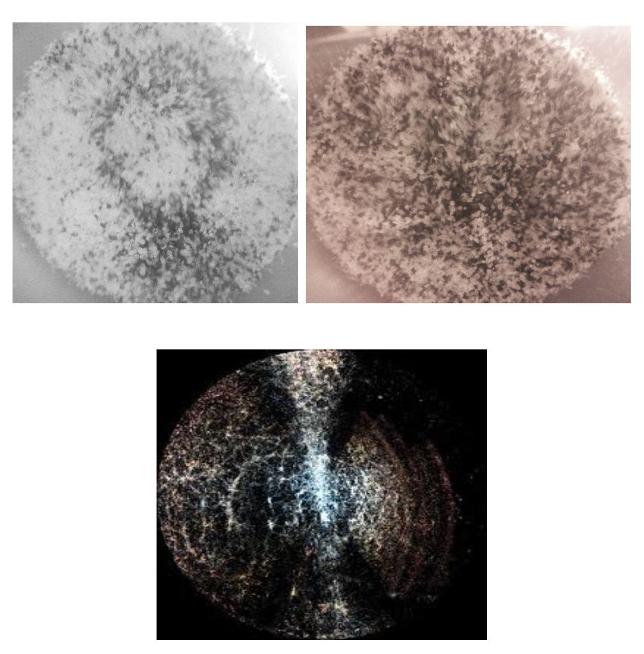
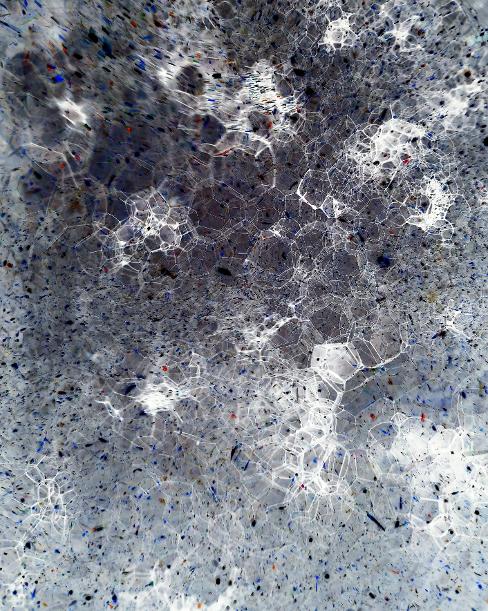
oscillation (10hz) improves structural integrity of bubbles/films